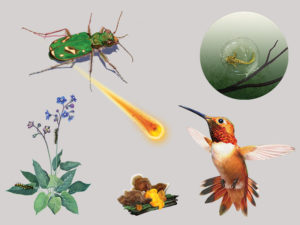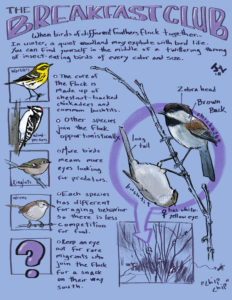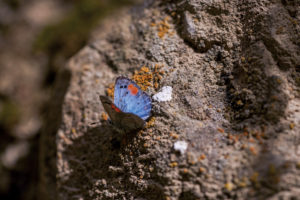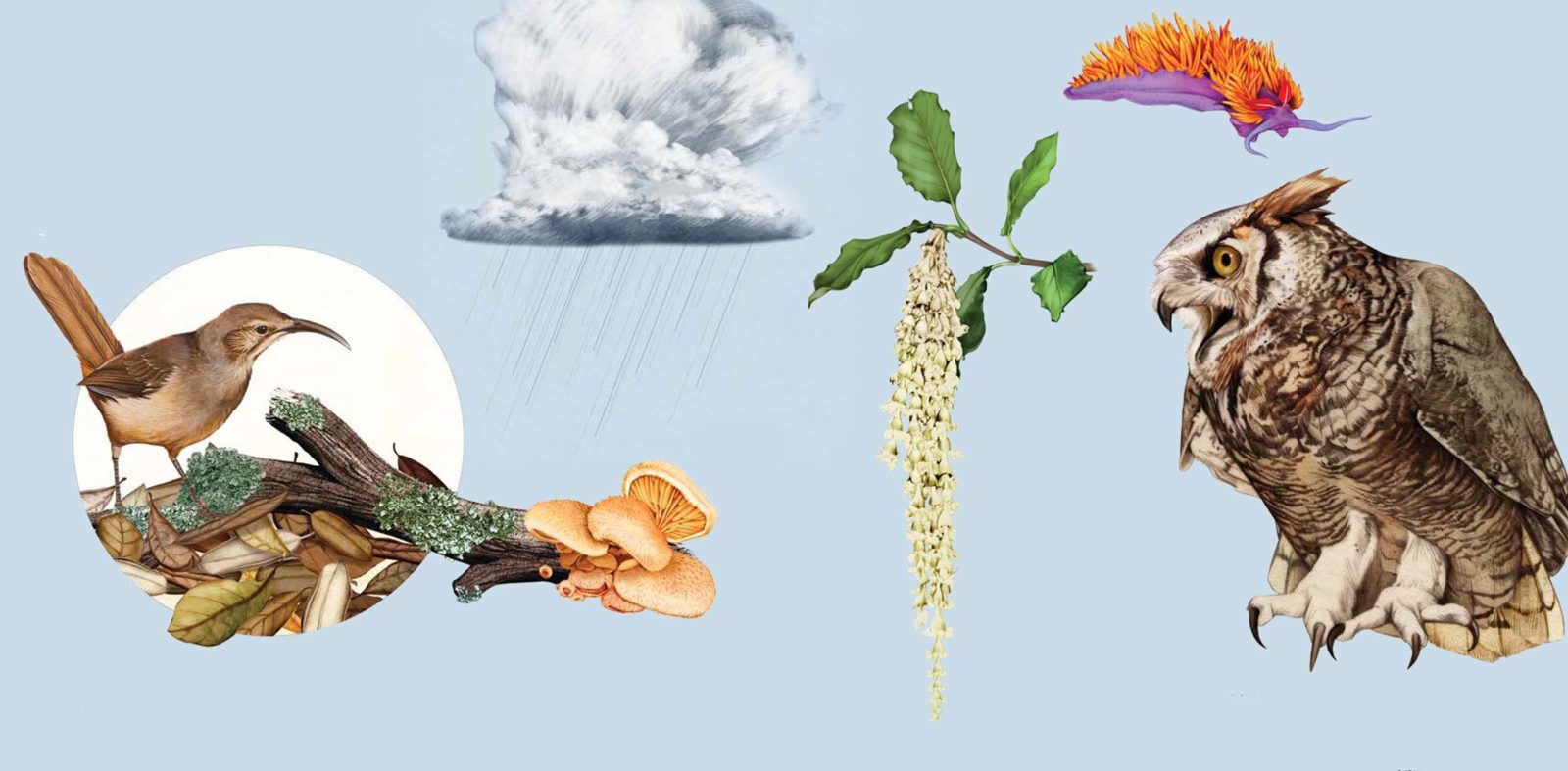
Text and research by Bay Nature staff.
Life in Winter includes a period of quiet and dormancy for some, but it’s when the show — the sights, smells, and sounds — begins for many others.
Feeding the Masses

It’s true that coast live oaks (Quercus agrifolia) are evergreen, but in fall and winter the trees shed old leaves before new flushes of leaf growth begin in spring. The oval, prickly, noticeably concave leaves collect on the ground in drifts like pale gold coins. Hiding in that leaf litter is a feast of mites, springtails, ants, spiders, whiteflies, and many others that feed towhees, thrashers, juncos, and other ground foragers. Farther down, below the leaf layer, lies a cache of acorns, buried by scrub jays. Most get unearthed and eaten by the birds while other food sources lie dormant during the months of February and March, but a few are left behind and germinate.
Off the Scent
To identify mock oyster mushrooms (Phyllotopsis nidulans), which grow in groups on rotting hardwoods during Bay Area winter, ask yourself three questions: Are they beautiful and orange? Are they hairy? And do they smell bad? Not just bad, but like dirty socks, rotten cabbage, or a sewer—mushroom hunters can’t come up with enough ways to describe the often really awful odor. P. nidulans gets its orange color from a high content of beta (58 percent) and alpha (29 percent) carotene, compounds the human body turns into vitamin A. Too bad the mushrooms often taste like they smell.
New Normal
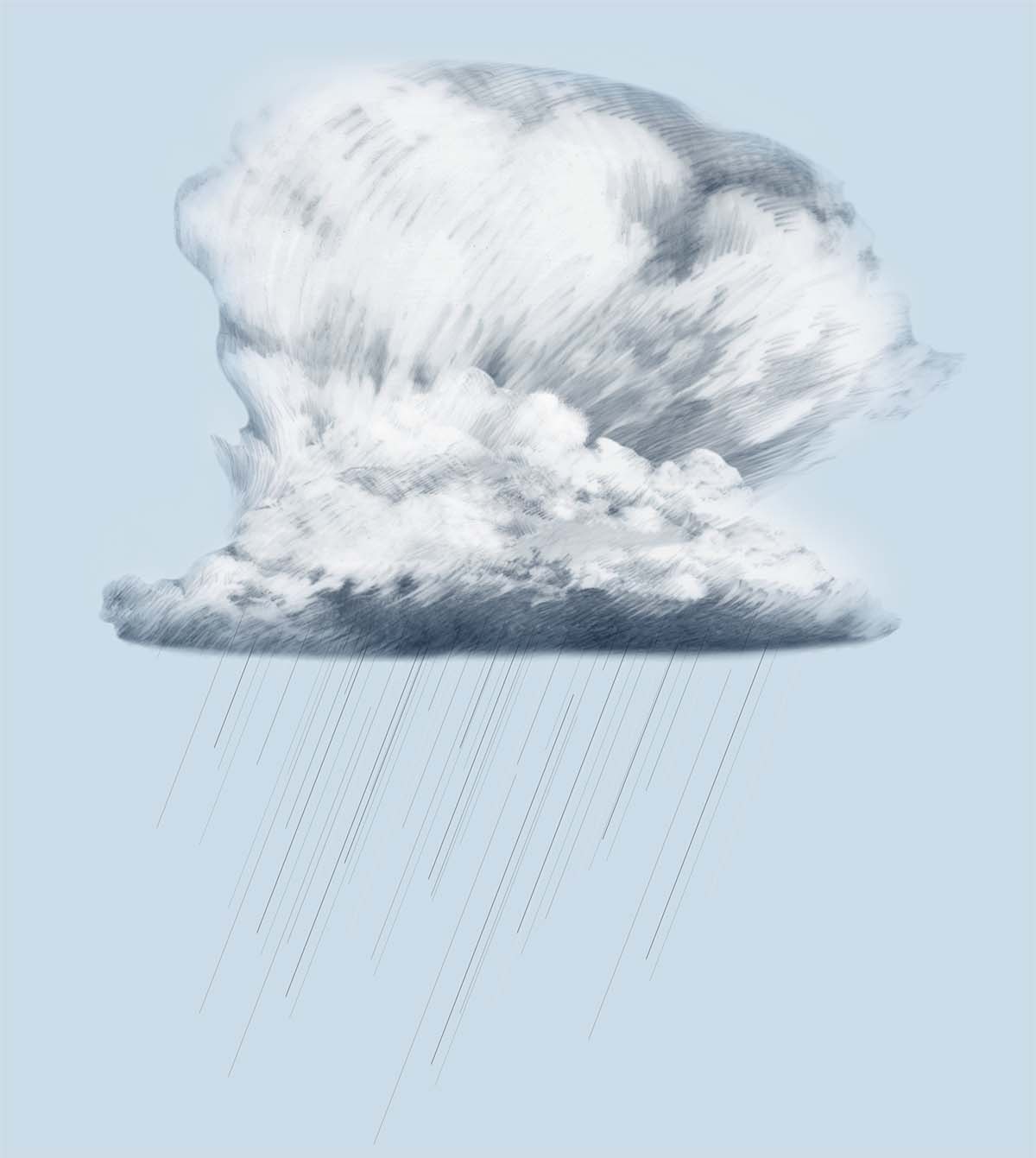
When it comes to California rainfall, “normal” more accurately means unpredictable swings from wet to dry. Our official “climate normal,” though, is based on averages over 30 years. With 2020 in the books, NOAA now defines “normal” here by what happened from 1991 to 2020 instead of 1981 to 2010. What’s the new normal? Less rain on average, by about three-quarters of an inch per year in downtown San Francisco. This year’s intense early fall rain and subsequent very dry spell didn’t look typical. But by mid-December the rain total just about averaged out to it, which for California … is kind of normal.
Silk Tassel

The wavy-leaf silk tassel (Garrya elliptica) typically passes as an ordinary coastal chaparral shrub. Except for when it doesn’t. Which is in winter after the male shrubs grow their long Rapunzel-ish tresses of cream-colored flowers. The small blooms are threaded together like fancy beads on a necklace that can measure a foot long. For all the winter flair, there’s been little documented about who and what is attracted to these flowers and purple fruits in our region, according to Bart O’Brien, the botanic garden manager in Tilden Regional Park. If you know, tell us.
Sea Slugs of Change

Nudis. That’s short for nudibranchs, the fabulously colored little slugs of the sea. The neon trifecta of the Spanish shawl (Flabellinopsis iodinea) comes from it eating the orange-colored polyps (think coral) of the hydroid Eudendrium ramosum. Their pigment colors the nudibranchs. Look for the Spanish shawl during warm-water years: When winter storms expose the polyps, the Spanish shawl feasts on them, and as the Pacific heats, the slugs increasingly turn up in Bay Area tidepools. “They’re a barometer of changing ocean temperature,” says UC Santa Barbara marine zoologist Jeff Goddard. But given we’re in the cold grip of a La Niña, look for them to the south this year in tidepools around Monterey County.
Winter Tune

When the night is long, black, and cozy with winter, the hands-down best soundtrack is the great horned owl (Bubo virginianus) duet. “Hoo-h’HOO-hoo-hoo,” calls one owl; “hoo-h’HOO-hoo-hoo,” calls the other in response. The female is the contralto to the male’s baritone. These monogamous pairs nest early, at least by February in the Bay Area, says Renée Cormier, an ornithologist with Point Blue Conservation Science. They prefer edge habitats, so you’re likely to hear them in neighborhoods near parks and open space. Listen, and their tune will carry you through to spring.

